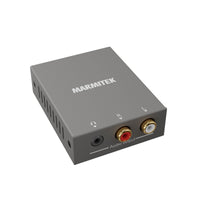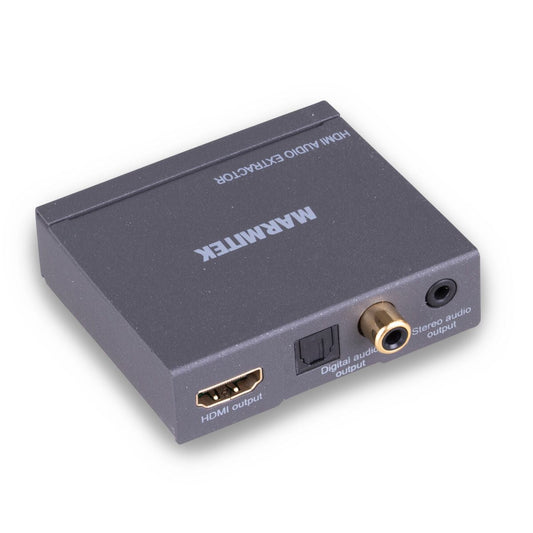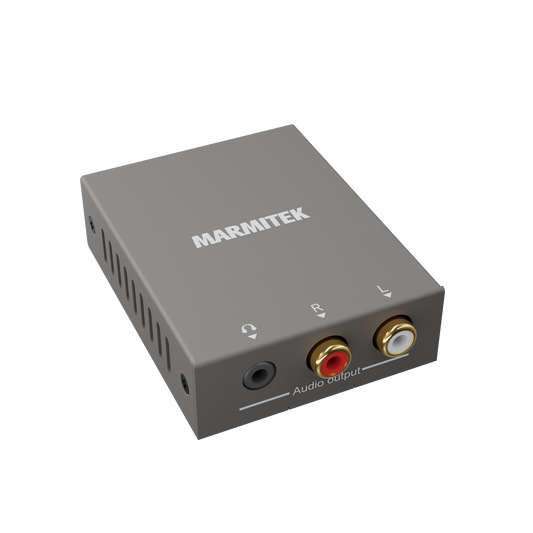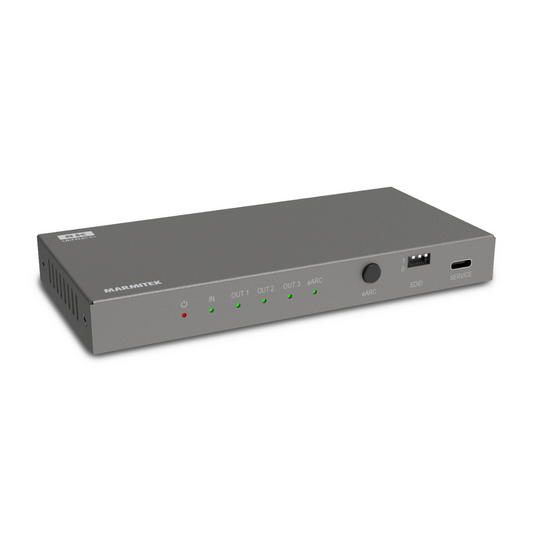Modern TVs offer increasingly better picture quality, but the sound often leaves much to be desired. And if you want to use an older amplifier or active speakers, you may run into connection issues. That’s where an HDMI audio extractor comes in. In this blog, we explain what an HDMI audio extractor is, the different types available, how to use one, and what to look for when buying one.
What is an HDMI audio extractor?
An HDMI audio extractor is a small device that extracts audio from an HDMI signal. Imagine that an HDMI cable carries both video and audio, but you want to play the audio through separate speakers or an amplifier. An HDMI audio extractor splits the audio from the video so you can send it to an external audio source. This is especially useful if your audio equipment does not have an HDMI input or if your TV doesn’t offer the right audio outputs.
What types of HDMI audio extractors are there?
1. Standard HDMI audio extractors
What they do: These extractors pull the audio signal from an HDMI source, such as a Blu-ray player, game console, or streaming device.
Outputs: They often feature both analog (RCA) and digital outputs (optical and/or coaxial), allowing you to connect the audio to a wide range of audio systems.
Use cases: Ideal for people who want to connect older amplifiers or active speakers without HDMI inputs, or when connecting an HDMI source without a dedicated audio output to your audio equipment.
2. HDMI ARC audio extractors
What they do: These extractors are specifically designed to extract the audio signal from a TV’s HDMI ARC port and send the sound to an external audio system.
Outputs: They usually have analog outputs (RCA) and sometimes also a 3.5mm headphone jack. They may support CEC (Consumer Electronics Control), allowing you to control the volume with your TV’s remote.
Use cases: Perfect for enhancing TV sound through an amplifier, soundbar, or active speakers—especially if your TV lacks other audio outputs or your audio system does not support HDMI ARC.
3. HDMI audio extractors with extra features (e.g. Dolby/DTS support)
What they do: Besides separating the audio signal, these models support advanced audio formats such as Dolby Digital, DTS, and sometimes even Dolby Atmos and DTS:X.
Outputs: They often feature various output types (analog, optical, HDMI) and support both standard and surround sound.
Use cases: Suitable for home theaters and situations where you want to enjoy advanced audio formats for a complete surround sound experience.
For what applications do you use an HDMI audio extractor?
| Scenario | Problem | Solution |
|---|---|---|
| 1: Connecting an older amplifier to a modern TV | You have an older amplifier without HDMI input and want better TV sound. | Use a standard HDMI audio extractor to send audio from an external source (such as a Blu-ray player) to the amplifier. |
| 2: Streaming service audio on TV through speakers | You want to play sound from services like Netflix through a better sound system, but your TV doesn’t have HDMI ARC. | Use an HDMI audio extractor with a streaming device (e.g. Apple TV or Chromecast) to route audio to your speakers. |
| 3: Connecting active speakers without HDMI | You have active speakers without HDMI input and want to use them for TV sound. | Use an HDMI audio extractor with analog outputs to send the HDMI source’s audio to the speakers. |
How do you connect an HDMI audio extractor?
Connecting an HDMI audio extractor is simple. Follow these steps:
- Connect the HDMI source (such as a Blu-ray player, game console, or streaming device) to the HDMI input of the extractor.
- Connect the HDMI output of the extractor to the TV. This ensures the video appears on the TV.
- Connect the audio output of the extractor (analog or digital) to your speakers or amplifier.
- Provide power via the USB port if the extractor requires it.
What should you consider when buying an HDMI audio extractor?
When choosing an HDMI audio extractor, keep the following in mind:
- Compatibility: Check whether the audio outputs match your audio equipment (e.g. RCA, optical, or coaxial).
- Support for eARC and CEC: If you want to extract sound from your TV, an extractor with HDMI eARC support is important. CEC allows you to control the volume with your TV remote.
- Number and type of outputs: Choose a model with connections suitable for your speakers or amplifier. Some extractors also offer a headphone jack.
- Audio formats: If you want a surround sound experience, choose a model that supports Dolby or DTS.
Which HDMI audio extractors does Marmitek offer?
Marmitek offers various HDMI audio extractors you can use to enhance your audio experience:
- Connect AE14: This is a standard HDMI audio extractor that sends audio from an external source to an amplifier or active speakers. It features digital (optical, coaxial) and analog (RCA) outputs.
- Connect ARC13: Specifically designed for HDMI ARC. It extracts sound from the TV itself and routes it to your audio system. It also supports CEC, allowing you to control volume with the TV remote.
- Connect AE34: The all-rounder among HDMI audio extractors. It supports both ARC and eARC and provides audio extraction from and to multiple sources while maintaining 8K/4K video quality. Ideal for modern home cinema setups with multiple audio systems or high resolutions.
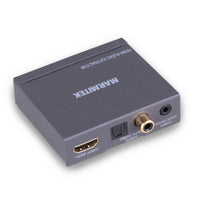
Connect AE14 - HDMI audio extractor 4K - 4K30 - ARC - 10.2 Gbps
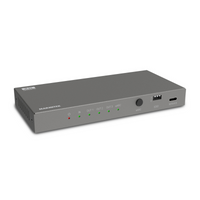
Connect AE34 - HDMI Audio Extractor 4K 120 Hz - 8K 60 Hz - 4K 60 Hz - eARC - ARC - HDMI 2.1 - HDR
What is the difference between the Marmitek Connect AE14, AE34, and ARC13?
| Feature | Connect AE14 | Connect ARC13 | Connect AE34 |
|---|---|---|---|
| Main application | Connecting an external device (like a Blu-ray player or game console) to an audio system without HDMI support. | Playing sound from a TV with HDMI ARC via an amplifier, active speakers, or headphones. | Full support for both ARC and eARC. Audio extraction from the TV as well as HDMI sources to various audio systems. |
| Audio extraction | Extracts audio from the HDMI input of an external device (e.g. Blu-ray, game console). | Extracts audio from the TV’s HDMI ARC port. | Extracts audio from both HDMI sources and the TV’s HDMI eARC port. |
| HDMI ARC support | Does not support ARC. | Supports HDMI ARC (Audio Return Channel). | Supports both HDMI ARC and eARC. |
| CEC support | No CEC support. | Supports HDMI CEC (Consumer Electronics Control) for volume control via the TV remote. | Full CEC support for volume and control between TV and audio device. |
| Connection options | Digital audio output (optical and coaxial), analog stereo output (L/R). | Analog stereo (L/R), 3.5mm headphone output. | HDMI, digital optical (S/PDIF), analog stereo (L/R). |
| Use with active speakers | Not specifically designed for use with active speakers. | Suitable for use with active speakers via analog L/R output and CEC functionality. | Fully suitable via multiple outputs and CEC functionality. |
| Use with headphones | No headphone jack available. | Equipped with a 3.5mm headphone jack. | No specific headphone jack, but analog output can be used. |
| Power | Operates on external power. | Powered via USB, can be connected directly to the TV. | External power supply (adapter included). |
| Situations where the product is useful | When you want to split audio from an HDMI source to an amplifier without an HDMI input. | When you want to play your TV’s sound through an external audio system without extra audio cables. | When you want top-quality audio and video, need multiple audio outputs, or want to connect a second audio system. Perfect for 8K/4K120 setups. |
Enhance your audio experience with an HDMI audio extractor
An HDMI audio extractor is a handy device for extracting audio from an HDMI signal and sending it to an external audio system. This is particularly useful if your equipment does not support HDMI ARC or if you want to keep using older amplifiers and active speakers. When choosing an audio extractor, pay attention to compatibility, connections, and support for HDMI ARC. Marmitek offers excellent solutions for different situations with the Connect AE14, AE34, and ARC13.
With this knowledge, you’re ready to improve your audio experience and get the most out of your home entertainment system!
>> Play sound from your TV with HDMI ARC on your audio system – Learn more about the Connect ARC13
>> Play sound from your TV or HDMI source on your audio system – Learn more about the Connect AE14
Do you have an older audio source and want to connect it to your new TV, or vice versa? Then you’re looking for an audio converter – Read more about audio converters here.



